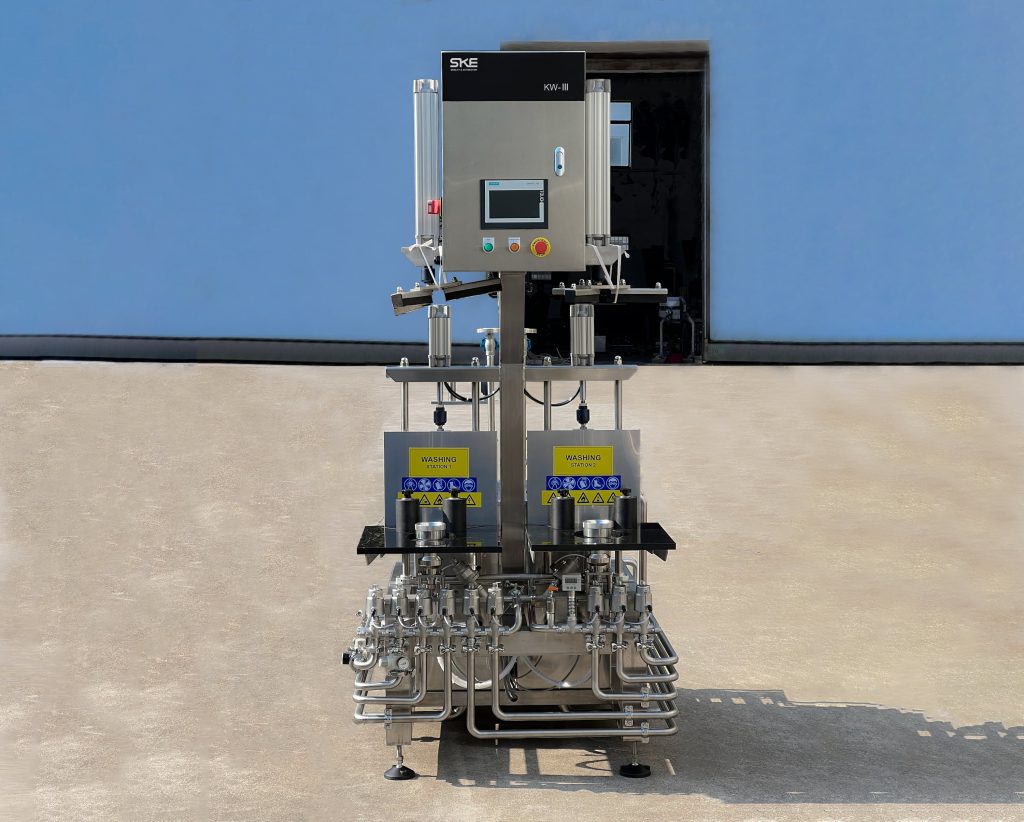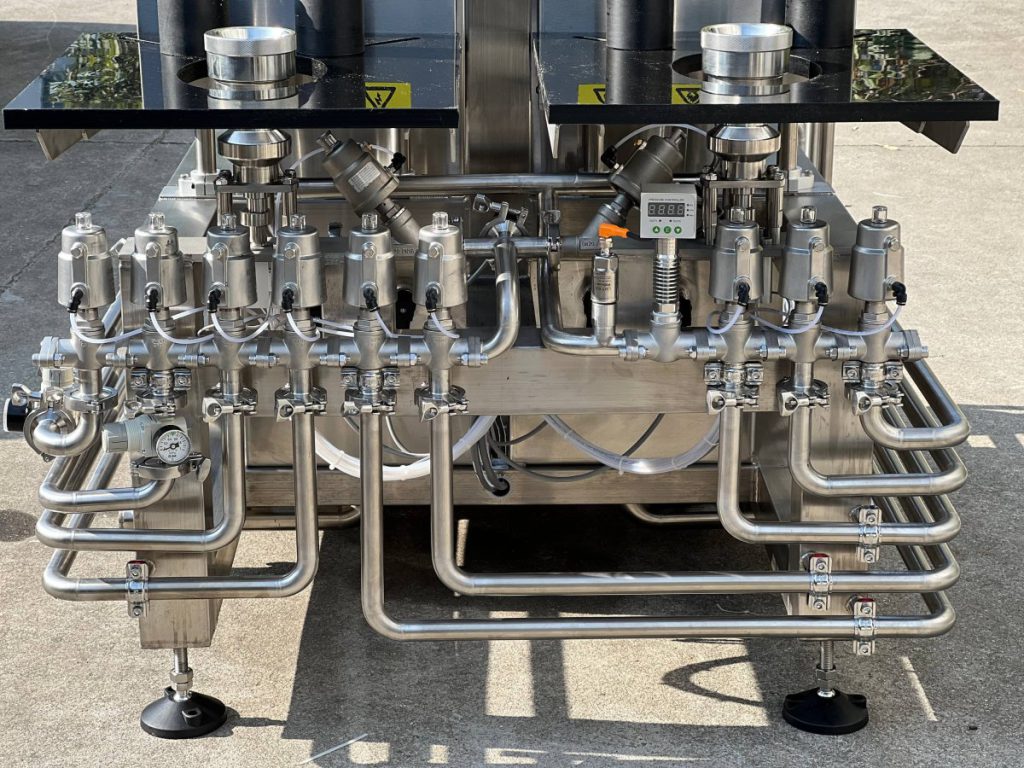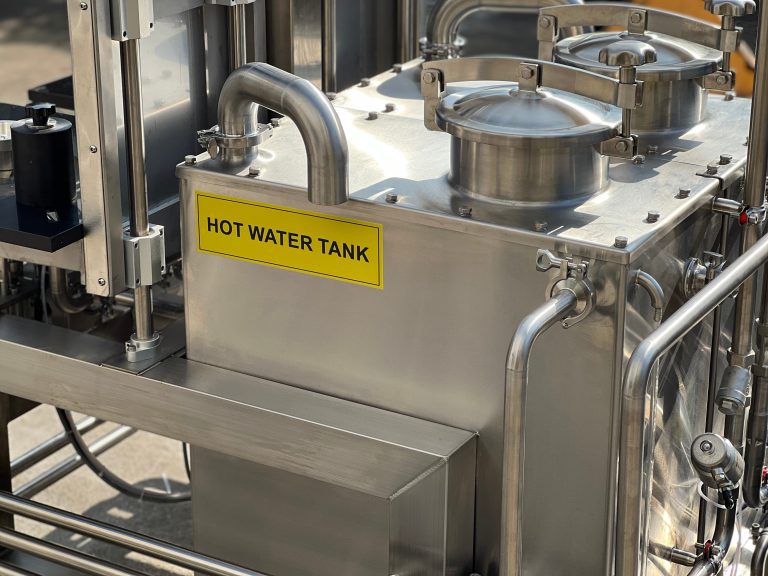Introdução

No cenário rigoroso de segurança alimentar de hoje, garantir a integridade e a qualidade dos produtos alimentícios é primordial. As máquinas de envase assépticas estão na vanguarda desses esforços, desempenhando um papel crucial na manutenção da pureza e segurança dos alimentos por meio de suas tecnologias avançadas de embalagem. Este blog se aprofunda nas funções, significado e avanços tecnológicos das máquinas de envase assépticas na indústria alimentícia.
What is an Aseptic Filling Machine?
Aseptic filling machines are sophisticated equipment designed to fill sterile products into containers under strictly controlled and sterile conditions. The fundamental principle behind these machines is to prevent any microbial contamination of the product during the packaging process. This is achieved by sterilizing both the product and the packaging material separately before filling. By ensuring sterility throughout the entire process, aseptic filling machines help preserve the nutritional content, flavor, and overall quality of the food product without the need for preservatives or refrigeration.
Importance in Food Safety
Ensuring Sterility
The primary function of aseptic filling machines is to guarantee the sterility of the product being packaged. Unlike traditional filling methods that may expose the product to potential contaminants during filling, aseptic filling machines maintain a sterile environment throughout the entire process. This meticulous approach significantly reduces the risk of bacterial growth and spoilage, thereby extending the shelf life of the product while preserving its freshness and nutritional value.
Extending Shelf Life
Another critical role of aseptic filling machines is in extending the shelf life of food products. By eliminating microorganisms that cause spoilage, these machines help maintain the product’s quality and safety over an extended period. This capability is particularly advantageous for perishable foods such as dairy products, juices, and liquid-based soups, which can be stored at ambient temperatures without compromising on taste or nutritional benefits.
Avanços tecnológicos
Automated Systems
Modern aseptic filling machines are equipped with advanced automation technologies that streamline the packaging process and enhance efficiency. These include robotic arms for precise container handling, automated sterilization systems that ensure consistent sterilization of packaging materials, and sophisticated filling mechanisms that minimize product wastage. The integration of automation not only improves productivity but also reduces human error, thereby ensuring consistent product quality and adherence to stringent food safety standards.
IoT Integration
In recent years, there has been a notable trend towards integrating Internet of Things (IoT) technologies into aseptic filling machines. IoT integration allows for real-time monitoring and control of critical parameters such as temperature, pressure, and sterilization efficacy. By continuously monitoring these factors, manufacturers can ensure optimal operating conditions and promptly address any deviations that may compromise product safety. This proactive approach not only enhances operational efficiency but also supports compliance with regulatory requirements and consumer expectations for safe and reliable food products.
Case Study: Application in the Beverage Industry

To illustrate the practical application of aseptic filling machines, let’s consider their role in the beverage industry. Table 1 provides a comparative analysis of aseptic filling versus traditional filling methods commonly used in beverage manufacturing.
Aseptic Filling vs. Traditional Filling in Beverage Industry
| Parâmetro | Aseptic Filling | Traditional Filling |
|---|---|---|
| Sterility | Ensures sterility throughout the entire process | Potential for contamination during filling |
| Shelf Life | Extends shelf life significantly | Menor prazo de validade |
| Product Integrity | Maintains product quality | May compromise product quality |
| Industry Adoption | Increasing trend | Established method |
Conclusão
Para concluir, aseptic filling machines play a critical role in upholding food safety standards by safeguarding the sterility and quality of products throughout the packaging process. Their evolution through technological advancements, including automation and IoT integration, underscores their importance in ensuring efficient and reliable food packaging operations. As consumer demands for safe, high-quality food products continue to rise, the role of aseptic filling machines remains indispensable in meeting these expectations and driving innovation within the food industry.
Perguntas frequentes
Q: How do aseptic filling machines differ from traditional filling machines?
A: Aseptic filling machines differ from traditional filling machines primarily in their approach to maintaining sterility. Aseptic filling machines sterilize both the product and packaging materials separately before filling, whereas traditional methods may expose the product to potential contaminants during the filling process.
Q: What types of food products benefit from aseptic filling?
A: Aseptic filling is particularly beneficial for liquid foods such as juices, dairy products, and soups, as well as semi-liquid and particulate foods that require extended shelf life without the need for refrigeration.
P: São aseptic filling machines environmentally friendly?
A: Yes, aseptic filling machines contribute to environmental sustainability by reducing food waste through extended shelf life and eliminating the need for preservatives, thereby promoting sustainable food packaging practices.

